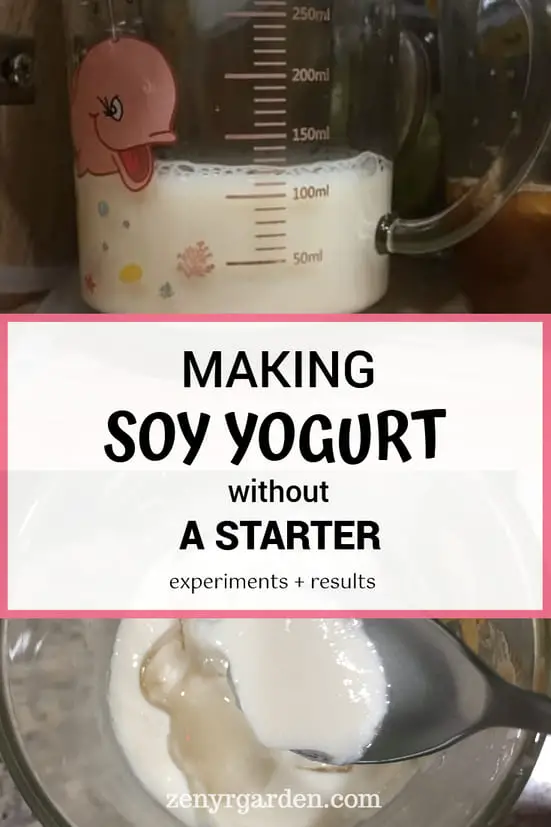We'll experiment making soy yogurt without a yogurt starter but with fermented rice wash. From this, you can keep the culture to start the next and next batch.
Let's start:
Recipe #1: From Rice Wash
Lactic acid bacteria, or LAB, are the beneficial microbes we're after to make our yogurt. They give yogurt that hint of sour taste. You can find these on veggies, sprouts, fruits, grains etc. We'll be using rice grains here to get the LAB.
What we'll be doing is:
- Get the rice wash
- Let it ferment (until you see bubbles, smell is slightly sour)
- Add 1 : 10 fermented rice wash to soybean milk
Let's see the making steps:
Step 1: Get Rice Wash
For the rice, you can use brown or white rice. Some advice to use sun dried ones as machine dried rice may have killed the good microbes we need. Then, mix the rice in water to get the wash.
/step-01-get-rice-wash.jpg)
You can use warm or cool water for mixing. I have found with warm water the microbes develop or get waken up a bit more and faster.
You can leave the rice grains there.
Step 2: Let Rice Wash Ferment
Then, place your rice jar in a warm place. It will start fermenting for the next 24-48 hours. Depending on where you're located, it may be faster or slower. In the summer here when I'm making it, one day is good enough.
/step-02-let-rice-wash-ferment.jpg)
You will know it's ready when you see bubbles on the surface or tiny bubbles floating up. The rice will smell a bit sweet first. If you leave it there some more, the smell may turn a bit sour. These bubbles are a sign the microbes in there are active and alive.
/step-02-bubbles.jpg)
We can use the wash now.
Step 3: Add 1:10 Rice Wash To Soy Milk
Next, you can add the rice wash to soy milk. For 100ml of milk, add in 10ml LAB. Here, I tried two versions, homemade soy milk and the store-bought one.
/step-03-add-rice-wash-to-soy-milk.jpg)
Place the milk jars in a warm place. Wait until it sets.
As this is the first batch, we may expect the yogurt to turn out quite sour. People actually use this as a culture starter to make the yogurt next time.
Let's wait 1-2 days to see how it turns out. I'll share with you the results.
Responses to Readers' Questions
How did they turn out? Is it necessary to use rice? Could I use another ferment like pickles or sauerkraut? Can you reuse the culture from the previous batch of yogurt or do you need to keep adding from the live ferment?
--> Hello, and thanks for your questions. All are great questions, to be honest. Unfortunately, I have lost the pictures of the results on an old phone of mine, otherwise I could show you visually. Recalling from my memory, both turned out solid. Very much yogurt like. As there is more soy content in my homemade soy milk version, the consistency turned out to be quite firm / tofu-like (if I recall correctly). The store-bought version was smoother. But both can be easily whipped into a good yummy creamy yogurt. As well, the longer you leave it the more sour it gets (you may already know this but anyway), first batch was Very sour. I wouldn't eat it as is but did intend to use it to start the next batch. I believe it is possible. Regarding the pickles or sauerkraut ferments, I guess it could work but not sure how much it will affect the smell or taste. Anyway, you could have a go and experiment with that. On my next trial, I'll make some notes and get the pictures up again. Have fun fermenting, I hope this helps. See you again next time!
Share or pin this post!



